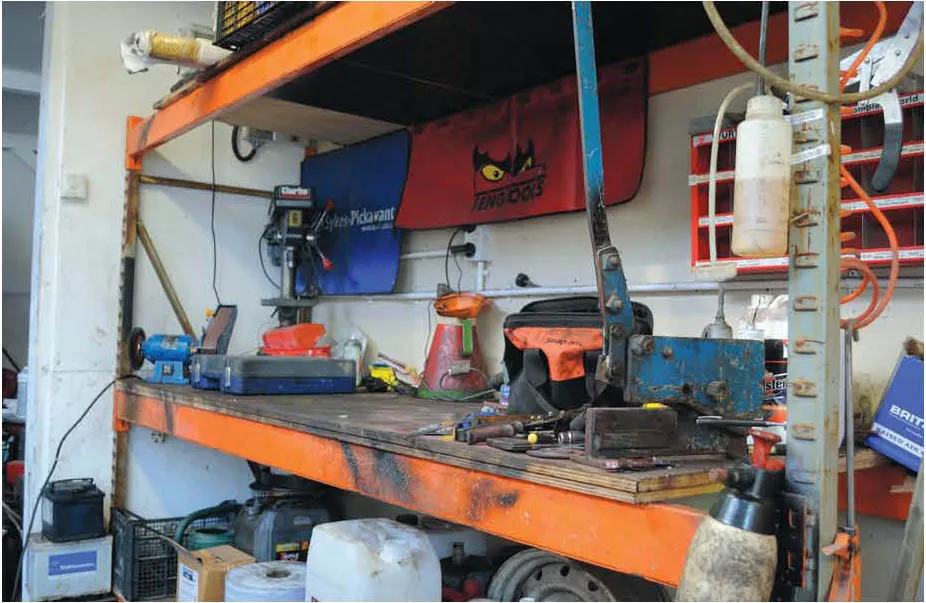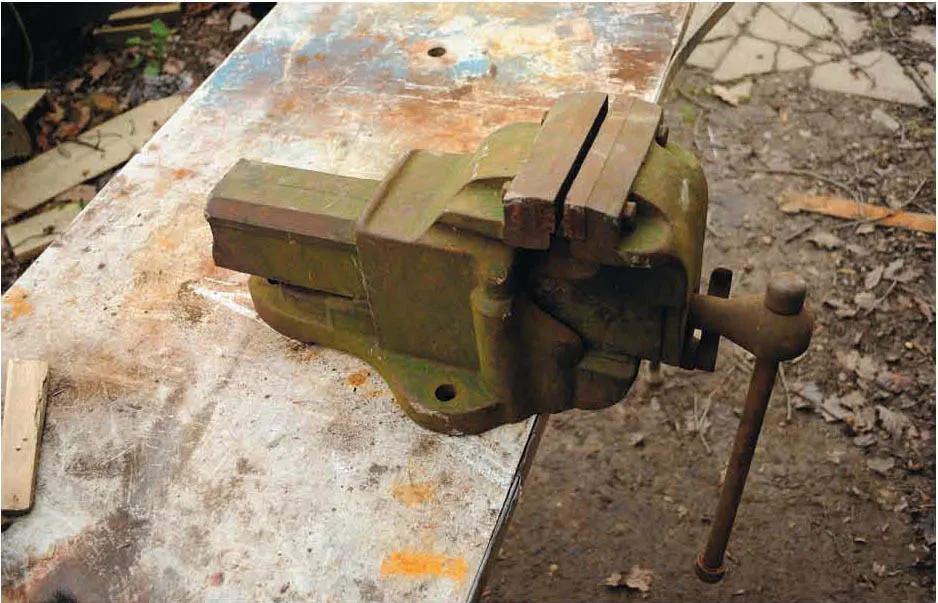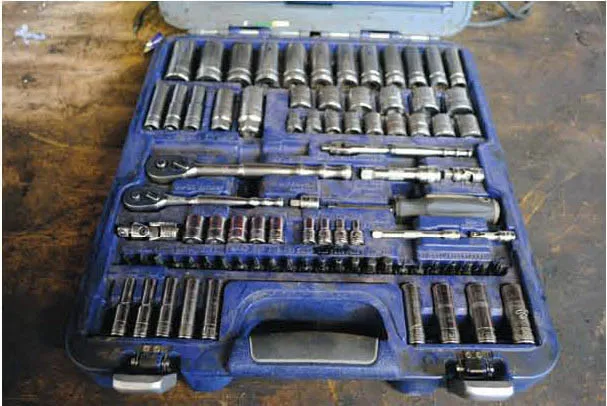![]()
Although this book is primarily about tractor restoration, to achieve this aim, unless all operations are to be outsourced to professional firms, then some understanding of the tools and their safe use needs to be understood. And even if the work is to be outsourced, a basic understanding of what will be going on will be beneficial, as more informed discussions can then be made, rather than just having blind faith in whichever firm is chosen for the work.
A workshop can be anything from a garden shed to a purpose-built building: it is home to all your tools and keeps them locked up out of harm’s way, and gives you somewhere to work.
My philosophy in life, and the whole point of the book, is this: why get someone else to do the work when most people, with a little guidance and some background information, will be able to carry out most tasks? Back in the 1970s during my time at secondary school, the curriculum was very different from what it is today: practical lessons were the order of the day, and not only did we have metalwork and woodwork lessons on a regular basis, but technical drawing was all but compulsory. This gave us an insight into how to make things, and also how to produce the drawings of what we were making. Admittedly times have changed, and now computers are used for all types of drawing, including technical drawing, with many CAD programs available – and now the CAD drawing file can be fed into a CNC lathe or milling machine directly, without it ever having been on a sheet of paper.
This is all very clever, but it doesn’t help in the practical restoration of a tractor – unless, of course, a vital part is broken or missing, in which case the part could be drawn and produced accurately in a short space of time. I am not saying do not use these services, but rather, with the right knowledge a more informed decision can be made as to what avenue to take during your restoration. CNC operations will not be discussed in this book, apart from a brief explanation, but as said already, basic lathe turning and milling will be covered.
SETTING UP A WORKSHOP
A ‘workshop’ can be anything from a garage to the garden shed, through to a purpose-built, fully kitted-out building. Before the consideration of any tools, the first thing to install will probably be some form of bench to work on: the major criterion when working on tractor components is strength, as most tractor parts are heavy by necessity – so it follows that to carry out operations on these components, they will need to be well supported. Although useful, a workmate-type portable bench is really only suitable to place hand tools on while working, and something with heavy section wood or steel angle legs will be required to support engine and gearbox components. The last thing you want is the legs on the bench to give way, because quite apart from the health and safety implications to your personal wellbeing, expensive damage may occur to your tractor components.
Fundamental to any workshop is a good sturdy bench, especially when working on parts of tractors that are heavy.
A large vice is a useful asset when fitted to the workbench: items can be held while they are being heated or undone.
TOOLS
Twenty to thirty years ago most men – and indeed women – would have had a fair selection of hand tools, as simple tasks were undertaken regularly on their vehicles, such as oil changes and servicing; also service intervals were in the order of 2–3,000 miles, unlike today, where they can be up to 12,000 miles apart – so people either never bother with servicing until their vehicle breaks down, or they employ a professional to service it for them. The same applies to tractors and farm machinery: where once the average farm had its own workshop, now things have become very technically advanced, with breakdowns being diagnosed by satellite links direct with the machine! This information is then downloaded to the local main agent, ready for when the machine arrives at their premises for service work. In fact much farm equipment is now operated on a lease/hire basis, with all the service work included in the package.
HAND TOOLS
So where do you start? If you have just bought a wreck ripe for restoration, or have a vintage machine needing some TLC, then a set of spanners would be a good start, along with a set of ½in drive sockets. There is no need to spend a fortune these days, as most budget tools are better made than their earlier counterparts: at one time ‘cheap’ meant soft or brittle tools, which either bent or cracked with mild force, but now even the cheaper brands sold at some of the discount supermarkets are approved by German TUV standards; the down side is in the finish of the tool itself, but it will get the job done. The more money spent means a more professional tool with a better finish, which makes handling them all day and every day a more comfortable task – you pay your money and make your choice, as with most things in life.
If you went out and purchased every tool that you thought you might require for the completion of a restoration project, the bill would probably be more than the value of your finished tractor. The best approach is to buy the tools as you need them for any particular task, and once this is completed, move on to the next task; tools do not necessarily need to be new, and second-hand ones will still do a good job for less money – and if you don’t expect to carry out the same task in the future, the money saved can be used to purchase tools for the next job on the list.
A good starting point with a toolkit is a comprehensive socket set.
Ring and open-ended spanners will be required as you progress with restoration work.
Pooling Your Resources
If you are amongst a group of like-minded friends, even within a club, and are undertaking the same sort of restoration work, inevitably at some point you will all need the same, or similar, tools. If one person buys the tools for one job and someone else buys the tools for another, there is no reason why they cannot be lent from one to the other – though obviously a certain amount of trust will be required, otherwise arguments could easily start over whose tools are whose and who owns what.
Toolboxes
Once you have purchased all those lovely shiny tools, the next step is to ...





